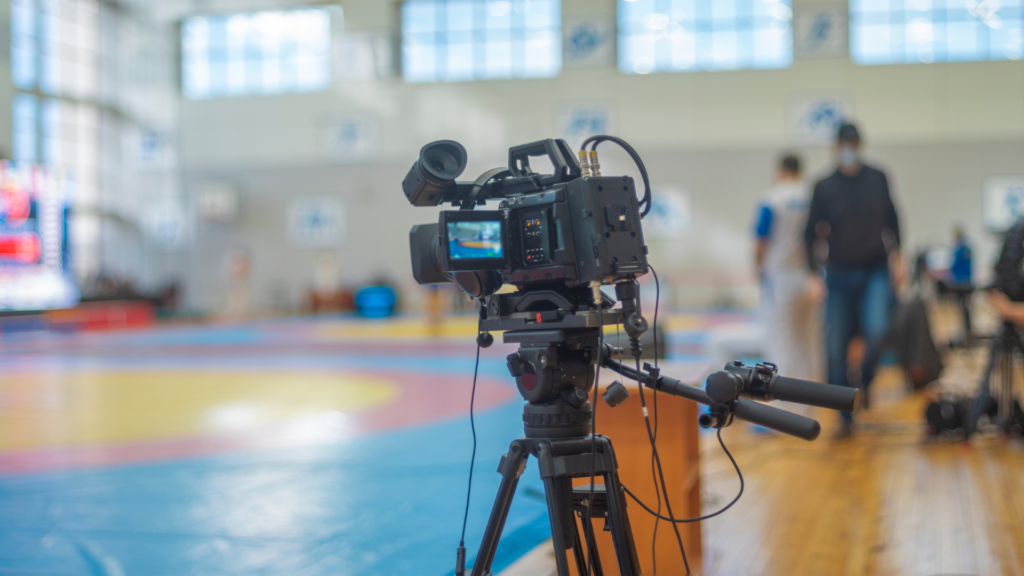Technology is an integral part of sports today. From tracking players’ stats to providing live streaming capabilities, technology has become an essential part of the experience for fans and athletes. In this blog post, we will discuss the use of technology in sports and how it can help to improve performance and experience.
Enhancing Athletic Performance Through Technology
Athletes can use many technological gadgets to improve their athletic performance. Technology can make life easier for athletes by providing them with the information and tools they need while performing.
Some popular devices used to help athletes during competitions include training schedules, GPS trackers, heart rate monitors, and muscle stimulators. Training schedules can help athletes stay on track and achieve their fitness goals. At the same time, GPS trackers allow them to monitor their progress throughout a workout or competition.
Heart rate monitors can determine how hard an athlete is working and whether they are reaching their maximum potential. Muscle stimulators can be used as a form of physical therapy or to increase strength and endurance in athletes. GPS tracking would then take place during the actual exercise session to provide real-time feedback on speed and distance travelled. Muscle stimulators could be worn during workouts to create micro-tears in muscles which will help them heal faster and more robust.
When it comes time for an athlete to compete, everything from their training schedule to their physical preparations can be tracked and monitored using a device such as a watch or a smartphone. This way, they can stay on top of their game and maximize their performance.
Nowadays, there is also technology available to change the conditions under which athletes train. This technology can be installed within their homes or wherever they train. Altitude simulation technology, often referred to as hypoxic training, involves the use of specialized equipment like an Oxygen Generator to mimic the reduced oxygen levels found at higher altitudes. This technology typically utilizes hypoxic chambers or masks that reduce the concentration of oxygen in the air an athlete breathes. By simulating conditions similar to high-altitude environments, where the air contains lower levels of oxygen, athletes can benefit in several ways, like improving their endurance and aerobic capacity.
Improving Training and Recovery with Technology
Some apps track workouts, monitor sleep patterns and measure hydration levels. And some devices are used for more specific purposes, such as heart rate watches for athletes. Those who want to track their intensity levels or blood oxygen monitors for runners who want to ensure they’re getting adequate amounts of oxygen during their workouts. This information can help coaches and trainers tailor training programs and provide better feedback on how an athlete is doing. It can also help athletes recover faster from injuries so they can get back into the game as soon as possible.
There’s no one-size-fits-all approach to using technology in sports training and recovery. But there are several ways it can be helpful. By understanding an athlete’s needs and using the right tools, coaches and trainers can help their athletes improve their performance and return to the game as soon as possible.
The Use of Video Technology in Sports Analysis
Sports technology has come a long way in recent years, and video technology in sports analysis is no exception. Video technology improves performance and experience by providing feedback on technique, helping players track their progress over time, and giving insight into game strategy.
Video technology is used to provide feedback on technique. This technology can help players refine their skills by tracking their movements and reactions. By tracking a player’s movements and reactions over multiple games or matches, video technology can provide an overview of a player’s development over time. Through watching recorded matches or games, video technology can help analysts see how different moves impact the overall game plan. This information is helpful to improve team play or strategize for future matches.
Enhancing Fan Experience Through Technology
One of the most important aspects of sports technology is improving the fan experience. Sports teams can create a better experience for their fans by providing information and entertainment through digital platforms. This enhances attendance and generates more revenue for teams.
Some of the most common ways teams use technology to improve fan experience are through social media, video streaming, and live events. Social media platforms provide teams with a way to connect with their fans personally. This allows them to answer questions, update game status, and distribute exclusive content.
Video streaming allows fans to watch games live without waiting hours for the next episode to air on television. Live events allow fans to interact directly with players and coaches in real-time. It will enable them to ask questions, make predictions, and participate in gameplay festivities.
While there are many ways that sports technology can enhance the fan experience, it is essential to remember the importance of face-to-face interaction between players and fans. By interacting directly with them, teams can build relationships beneficial when seeking sponsorship or other forms of corporate support.
The Future of Technology in Sports
Sports technology has come a long way in recent years. Sports technology has become a vital part of the game, from tracking player data to providing live streaming for spectators. While there are many different applications of sports technology, one actual application is enhancing performance and experience.
A prominent way sports tech enhances performance is through the tracking of physical and emotional data. This data serves to pinpoint areas for improvement, shape training regimes and recovery programs, and refine gameplay through the power of artificial intelligence (AI) or machine learning. Additionally, technology such as multi-cloud management systems can aid in the storage of match data and player records. This enables broadcasters to conduct real-time analyses and offer insights to viewers. For coaches, access to this data refines decision-making and leads to the development of more effective strategies.
Live streaming has made watching sporting events more accessible than ever before. But it can also be tedious for viewers if there’s a lot of technical noise in the background. By using audio enhancement technologies, broadcasters can reduce background noise while keeping viewers aware of what’s going on on-screen. This not only makes live streaming more enjoyable for spectators, but it also helps keep players focused during competition.
Technology Improves Athlete Performance
Technology has been playing a significant role in sports for quite some time now, and there are no signs of it stopping. What started as simple tools to help coaches and athletes communicate more efficiently has become much more. From tracking player performance to providing real-time feedback, technology is helping us better understand how each athlete performs on the field or court. In the future, we can only imagine what further advancements will be made to help athletes achieve their goals even faster and with greater precision.




